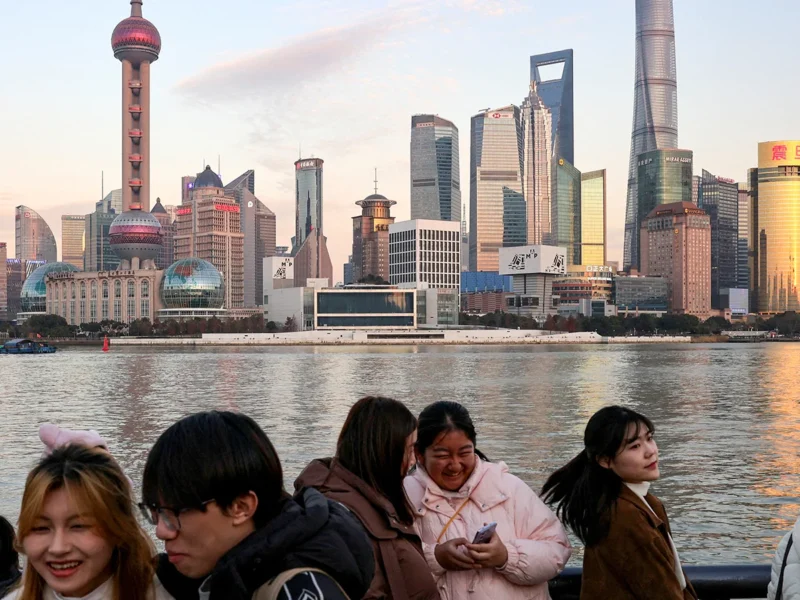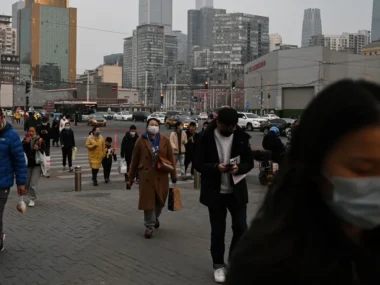China’s economy outpaced expectations in the final quarter of 2024, according to official data released on Friday, as it braces for potential new tariffs under US President-elect Donald Trump, who will assume office next week.
The growth was largely driven by exports, which pushed China’s trade surplus to a record nearly $1 trillion last year. However, this strength may provoke Trump, who has pledged to impose higher tariffs on Chinese goods, with an additional 10% surcharge over existing tariffs, unless China halts the flow of illegal drugs into the US. During his campaign, Trump had threatened tariffs as high as 60% on all Chinese imports.
The National Bureau of Statistics (NBS) also reported a surprising uptick in the birth rate last year, reversing a decline that had intensified since 2017. However, China’s overall population continued to shrink for a third consecutive year.
In the fourth quarter, GDP grew by 5.4%, surpassing the 5.0% forecast by economists polled by Reuters and showing an acceleration from the 4.6% growth in the third quarter.
For the full year, growth was 5.0%, slightly above the 4.9% forecast. Goldman Sachs analysts noted that both quarterly growth and last month’s industrial production data exceeded expectations but cautioned that weaknesses remain.
They predict a slowdown to 4.5% growth this year, as the likely impact of higher US tariffs could outweigh the effects of policy easing amid a prolonged property downturn and weak consumer sentiment.
Economic momentum improved toward the end of 2024 after China’s leadership introduced a stimulus package in late September, primarily focusing on monetary measures. Since then, a series of initiatives, including a 10 trillion yuan ($1.4 trillion) debt package for local governments, interest rate cuts, and expanded schemes like “cash-for-clunkers,” have been implemented to boost growth.
Despite these efforts, experts believe more needs to be done to stimulate consumer spending, especially after a significant wealth loss due to the ongoing housing crisis, estimated at $18 trillion by Barclays. Some suggest that the return of Trump and the potential for steep tariffs may prompt Chinese leaders to take more decisive action.
Larry Hu, chief China economist at Macquarie Group, noted that Beijing has shown it will take strong measures to counter the impact of tariffs. “Strong tariffs result in strong stimulus and thus better domestic demand,” he wrote in a research note.
Birth Rate Increases
China is facing multiple challenges, including a severe property crisis that has diminished consumer wealth and curtailed household spending, as well as a demographic issue that threatens future growth prospects.
According to the NBS, the country saw a slight increase in the birth rate last year, with 6.77 births per 1,000 people, up from 6.39 the previous year. Approximately 9.54 million babies were born, marking an increase of over half a million from 2023. This is the first time since 2016 that China has experienced a rise in births, following the relaxation of its one-child policy.
The small rebound in birth rates follows a series of government measures aimed at encouraging larger families, such as extending maternity leave, offering financial incentives, and improving childcare services. Additionally, 2024, being the Year of the Dragon on the Chinese lunar calendar, was considered an auspicious year for having children.
However, China’s overall population fell by 1.39 million, reaching 1.408 billion in 2024, continuing a downward trend that began in 2022 when India surpassed China as the world’s most populous country. The working-age population (ages 16-59) also decreased by 6.83 million, contributing to the ongoing demographic contraction. Meanwhile, the population over 60 grew, now making up 22% of the total population.
This aging population and shrinking workforce pose significant risks to China’s economic and social stability, creating challenges in funding healthcare and pensions for the elderly while maintaining economic growth.
China had relaxed its one-child policy in 2015, initially allowing couples to have two children, then increasing the limit to three in 2021. Despite these changes, birth rates have continued to decline after a brief rise.
The government has promoted a “new-era marriage and childbearing culture,” encouraging young people to marry and have children at an “appropriate age” and to share childcare responsibilities. However, these policies have not been successful in convincing young adults, many of whom face high unemployment, rising living costs, and inadequate social welfare support amid the economic slowdown. As a result, many young people are delaying marriage and childbirth, with an increasing number opting to forgo them entirely.











